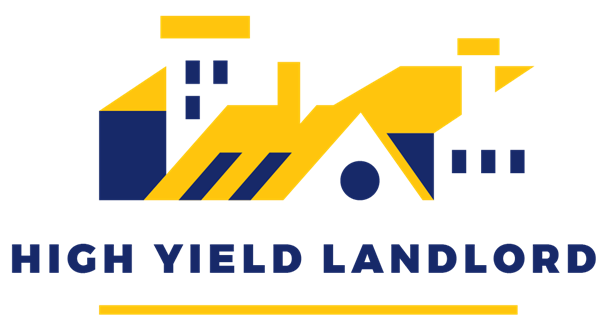MARKET UPDATE – Is AI About to Break Passive Investing?
AI is being celebrated as the biggest productivity breakthrough since the internet. It promises to automate workflows, cut costs, and boost profits. That is the popular story.
But I believe there is another side to the coin. AI could just as easily become one of the most powerful disruptors of capital markets in decades. Not because it prevents innovation, but because it destroys pricing power and compresses profit margins across much of the public market.
And when that realization sinks in, it could spark a massive shift in investor behavior.
AI Breaks Barriers to Entry – and That Breaks Profit Margins
The starting point is simple. AI lowers the cost of launching, scaling, and operating a business.
A marketing team can be replaced with a single person using ChatGPT.
A software product can be built with a fraction of the engineers once required.
Customer support, legal review, and even corporate strategy can be partially automated.
The outcome is predictable. Much more businesses are created. Competition rises in nearly every sector, from fintech and legal services to education, design, and enterprise software.
This has direct consequences:
More competition
Lower prices
Weaker pricing power
Falling profit margins
That is good for consumers. But it is a very different story for investors holding broad market exposure through passive index funds.
The Hidden Flaw in Passive Investing
Passive index funds like SPY, VTI, and QQQ are designed to own everything:
The winners that harness AI
The losers that are disrupted by it
The incumbents quietly losing pricing power to new entrants
This approach works in an environment where most businesses benefit from growth and rising margins. But it is far more dangerous in a world where structural headwinds affect most of index constituents.
Passive funds do not discriminate. They typically buy based on market cap, not on competitive durability. They cannot screen for AI exposure, moat strength, or pricing power. If AI reshapes the business landscape, passive investors may find themselves holding a large collection of declining companies.
The Wake-Up Call for Investors
AI will not just disrupt a few industries. I think that it will touch nearly everything.
I think that the vast majority of public companies could face margin pressure or slower growth due to AI-driven competition and deflationary pricing dynamics.
Only a small number of companies will emerge stronger—those with irreplaceable assets, proprietary data, or dominant platforms. Everyone else will be forced to compete in markets with rising competition where prices are falling, moats are shrinking, and customer loyalty is fading.
This means selectivity will become critical. Investors will need to ask:
Which businesses are defensible?
Which are being disrupted?
Who is using AI to lead, and who is being blindsided by it?
The age of “owning everything” through passive index funds may then look increasingly naive. A new investment era will demand a deeper understanding of what you own—and why.
The Rotation Hasn’t Started – But the Setup Is Clear
For now, passive strategies still dominate inflows. SPY and QQQ are still perceived as safe and simple ways to get exposure to the market.
But that perception could change quickly if:
Highly efficient AI-native startups emerge in most sectors and start to take visible market share from incumbents
Corporate earnings start showing margin declines across sectors
Retail and institutional investors realize that passive ETFs = exposure to disruption
The result could be significant outflows from broad passive funds and inflows to other asset classes, active manager, and AI-aware strategies.
The era of passive investing would not end—but its dominance might take a hit.
Real Estate and Infrastructure – Defensive Assets in an AI World
One area that could benefit from this rotation is real estate and infrastructure.
Why? Because while AI can replicate knowledge work, it cannot replicate land, physical assets, or the infrastructure on which digital economies depend.
Scarcity of Land
AI may reduce the value of many businesses, but it cannot manufacture new locations in urban cores, life science clusters, or logistics hubs. Land remains scarce and irreplaceable.Deflation = Lower Interest Rates = Higher Property Values
If AI brings deflationary pressure across the economy, central banks will likely respond with lower rates. Lower interest rates compress cap rates, increasing real estate valuations. Yield-producing assets like real estate become more attractive in a low-rate, low-growth world.More Business Formation = More Space Demand
AI makes it easier to launch new businesses. These businesses still need offices, labs, warehouses, data centers, and fulfillment hubs. More business formation leads to more physical space demand.Real Estate as a Store of Value
In a world where digital products are commoditized and corporate margins shrink, investors will seek assets that preserve wealth and generate stable income. Real estate and infrastructure assets provide scarcity, cash flow, and inflation protection.
That is why institutional capital could increasingly rotate toward physical, cash-flowing assets as the defensive core of portfolios.
Conclusion: AI Is a Tailwind for Innovation, But a Headwind for Indices
The paradox is striking.
AI will create enormous wealth—but at the same time, it may destroy a lot of it and make broad equity exposure through passive funds less attractive.
Passive investing thrives when the average company is profitable, protected, and growing. If AI breaks those assumptions, the foundation of passive investing weakens.
The winners will be selective businesses with moats, infrastructure providers, monopoly data owners, and physical asset holders. We think that the losers will be the vast middle—companies that once relied on human expertise, brand, or scale, but now face relentless AI-driven competition.
This will not happen overnight. But as earnings, margins, and competition evolve, the cracks will become harder to ignore. When investors realize that passive index funds give them broad exposure to businesses in structural decline, we expect capital flows to shift.
For investors, the key lesson is clear: do not assume that what worked in the past will keep working in the AI era.
Stay selective. Own scarcity. And remember that in a world of digital abundance, tangible assets like real estate and infrastructure may become the ultimate shelters from AI disruption.
Finally, please note that we have exceptionally posted this article without a paywall. If you found it valuable, consider joining High Yield Landlord for a 2-week free trial.
You will also gain immediate access to my entire REIT portfolio, real-time trade alerts, exclusive REIT CEO interviews, and much more. We are the largest and highest-rated REIT investment newsletter online, with over 2,000 paid members and more than 500 five-star reviews.
We spend thousands of hours and over $100,000 per year researching the market for the most profitable investment opportunities, and we share the results with you at a tiny fraction of the cost.
Get started today - the first 2 weeks are on us:
Analyst's Disclosure: I/we have a beneficial long position in the shares of all companies held in the CORE PORTFOLIO, RETIREMENT PORTFOLIO, and INTERNATIONAL PORTFOLIO either through stock ownership, options, or other derivatives. High Yield Landlord® ('HYL') is managed by Leonberg Research, a subsidiary of Leonberg Capital. All rights are reserved. No recommendation or advice is being given as to whether any investment is suitable for a particular investor. The newsletter is impersonal and subscribers/readers should not make any investment decision without conducting their own due diligence, and consulting their financial advisor about their specific situation. The information is obtained from sources believed to be reliable, but its accuracy cannot be guaranteed. The opinions expressed are those of the publisher and are subject to change without notice. We are a team of five analysts, each contributing distinct perspectives. Nonetheless, Jussi Askola, the leader of the service, is responsible for making the final investment decisions and overseeing the portfolio. We do not always agree with each other and an investment by Jussi should not be taken as an endorsement by other authors. Past performance is no guarantee of future results. Our portfolio performance data is provided by Interactive Brokers and believed to be accurate but its accuracy has not been audited and cannot be guaranteed. Our portfolio may not be perfectly comparable to the relevant index. It is more concentrated and may at times use margin and/or invest in companies that are not typically included in REIT indexes. Finally, High Yield Landlord is not a licensed securities dealer, broker, US investment adviser, or investment bank. We simply share research on the REIT sector.






